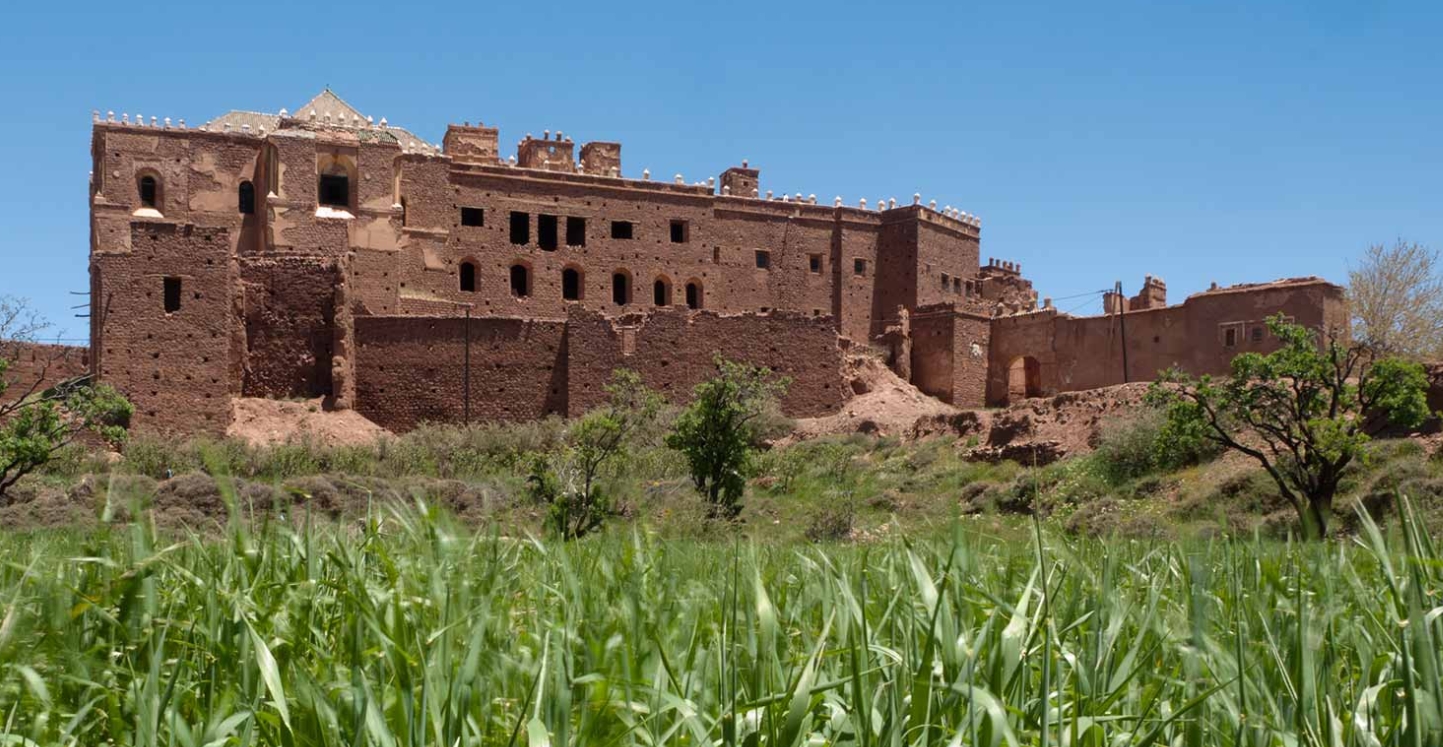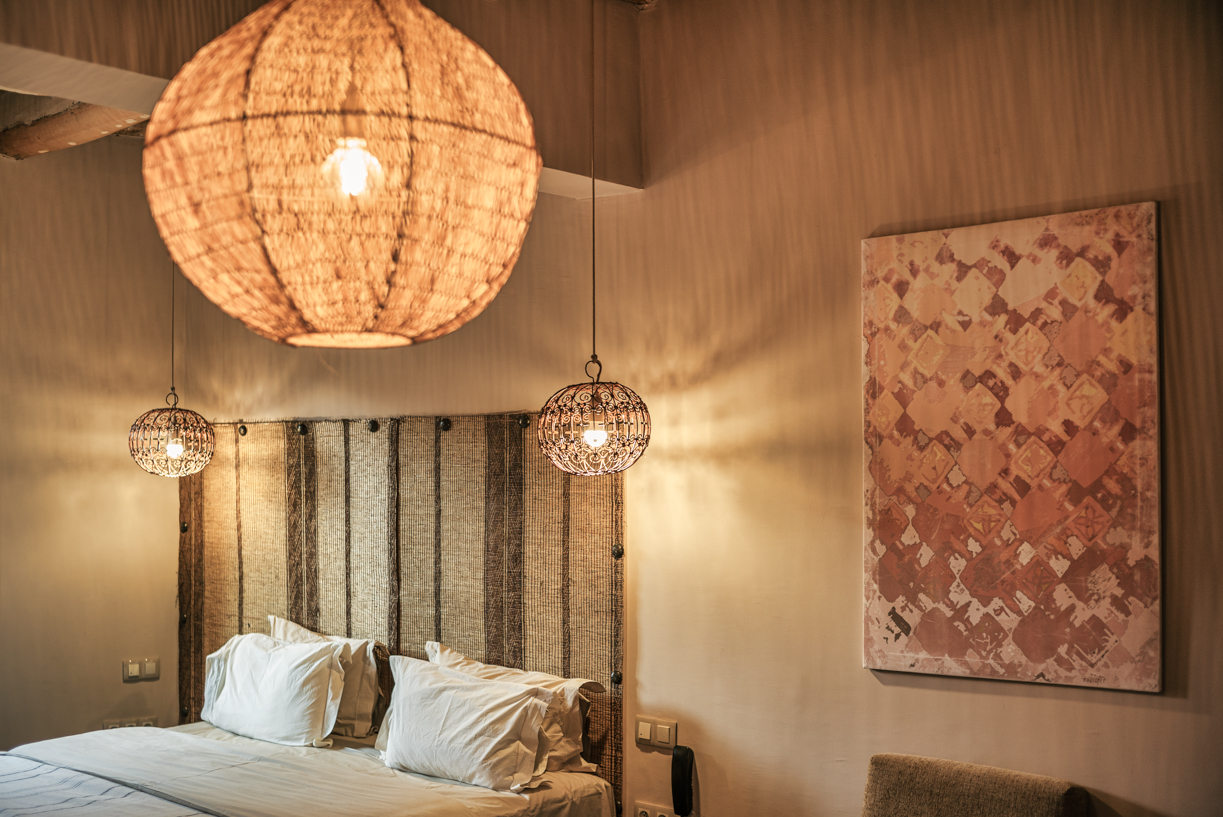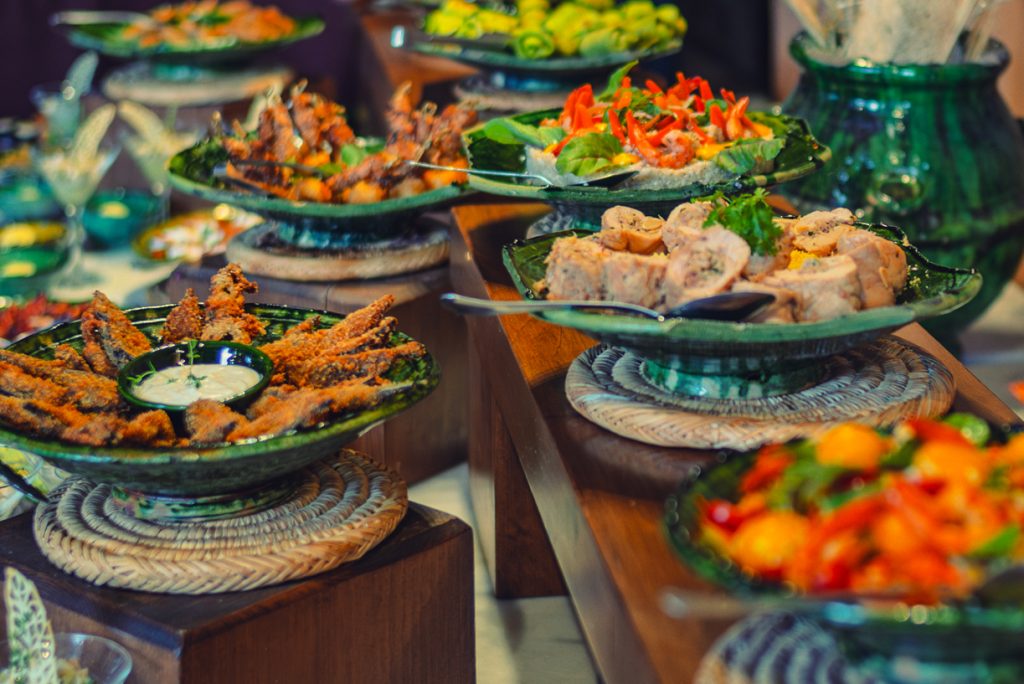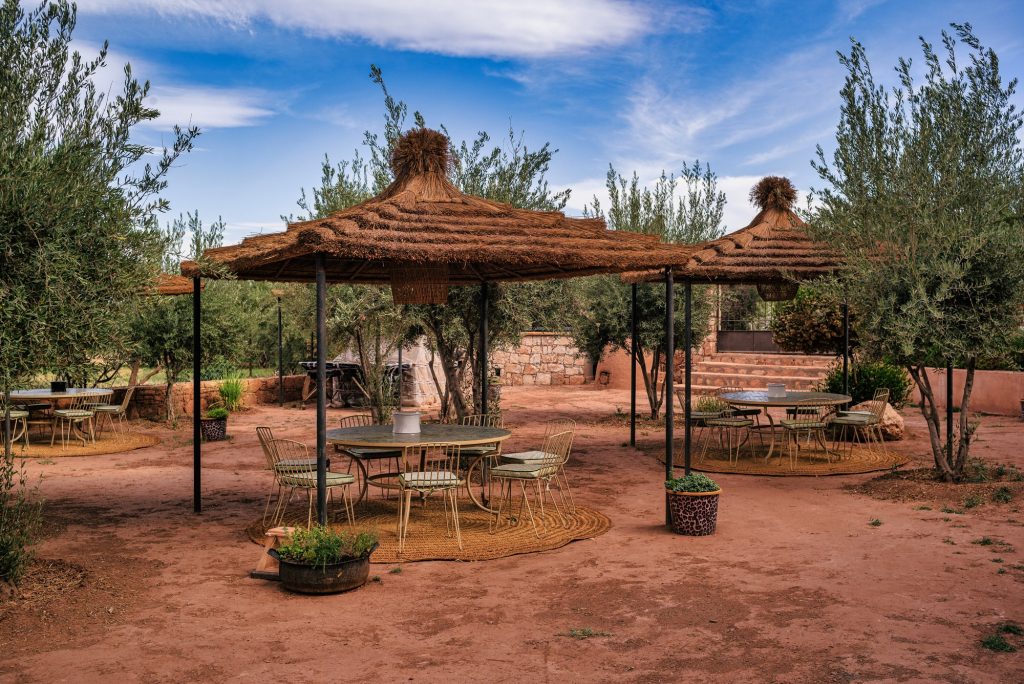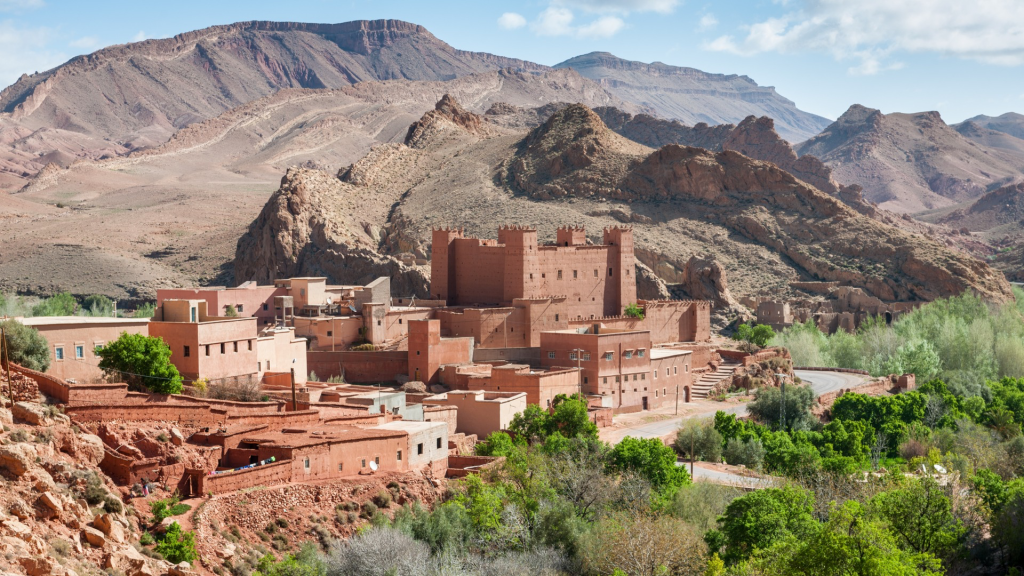The first inhabitants of Telouet were Berber shepherds who lived in caves on the slopes of the nearby mountains. Over time, Telouet became an ethnically mixed territory. Very early on, Jews settled here, becoming mainly salt wholesalers and craftsmen. In the Middle Ages, Arabs arrived in Telouet with the wave of Islamisation of Morocco. This population built medersaKoranic schools and zawiya specifically for Islamic theological teaching. Famous marabouts such as Sidi Ouarghal, Sidi Ouissaâden and Sidi Daoud settled in the region. As for the black-skinned population HaratineIt is made up entirely of black slaves from Mali, Guinea, Sudan and other African countries. This ethnic group was transported by trans-Saharan caravans to the interior of Morocco, as in Telouet.
At the time, this douar was an essential crossing point for ancient trade caravans crossing the Telouet pass, Tizi N'Telouet. Telouet was also a crossing point for military expeditions such as the one led by Ahmed El Mansour Eddahbi to Sudan in 1590.
From 17th century, the arrival of the Glaoua family in the region was a turning point in the history of Telouet. According to some sources, this family descended from a marabout called Mohamed Ou Saleh originally from the Asfi region and originally from the Umayyad dynasty. On their arrival in Telouet, the Glaoua built a zawiya. They distributed indulgences and blessings called the baraka inherited from one of their ancestors. Once they had gained religious influence, their political ambitions grew.
At 18th century, the Sultan Moulay Ismail granted the title of caïd to the Glaoua to control the caravan route and extract the right of passage. In 1893, the Sultan Moulay El HassaneHassan, also known as Hassan 1st, commanded a military expedition. harkasouthwards to subdue the rebellious tribes or the dissent of the Bled Es-Siba. On his return, the Sultan and his army were surprised by the snow at Telouat. El Madani El Glaoui is organising a diffaa grand reception in their honour. In recognition of this hospitality, the sultan granted El Madani the right to collect taxes from the surrounding tribes and to levy taxes on passing caravans. The sultan also gave him weapons, in particular a Krupp cannon, which is currently on display in the Taourite kasbah. In 1908, El Madani El Glaoui was appointed Minister of War, Ouazir Alharb.
The rise to power of the Glaoua made Telouet a residence for the new caïds and a command post in the south. Construction of the kasbah of Telouet, the castle of the new lords, began in the 18th century.th century with a Berber architectural style.
Between 19th and the 20th In the 19th century, Oriental and Moorish-Spanish styles were introduced into the extension of the kasbah. It was an institution of command in its own right and a place of seigneurial life par excellence, housing a court of justice, a prison, a residence, a court of festivities, a stable... The famous Lhaj Thami El Glaoui also lived in the kasbah of Telouet. He was a caïd of great economic power, having acquired numerous landholdings and shares in Omnium Nord Africain and CTM. A man of refined taste, Lhaj Thami played golf in Marrakech and collected carpets and precious stones. Above all, he welcomed illustrious personalities such as Resident General Steeg, Sultan Sidi Mohamed on 16 November 1931, Winston Churchill in 1937, General Patton in 1942, Jacques Majorelle, Lyautey and many others.
Today, the kasbah is succumbing to the vagaries of the weather and to oblivion. Only the main residence and a few outbuildings remain, still well preserved enough to welcome the curious gaze of visitors, revealing the finesse and beauty of the craftsmen of yesteryear, the refinement of the old masters and the way of life of a population that no longer exists. Every corner of the kasbah is a page in the human history of Telouet of yesteryear, and within its walls lies the story of those caïds who, history will record, were known as the Lords of the Atlas.
